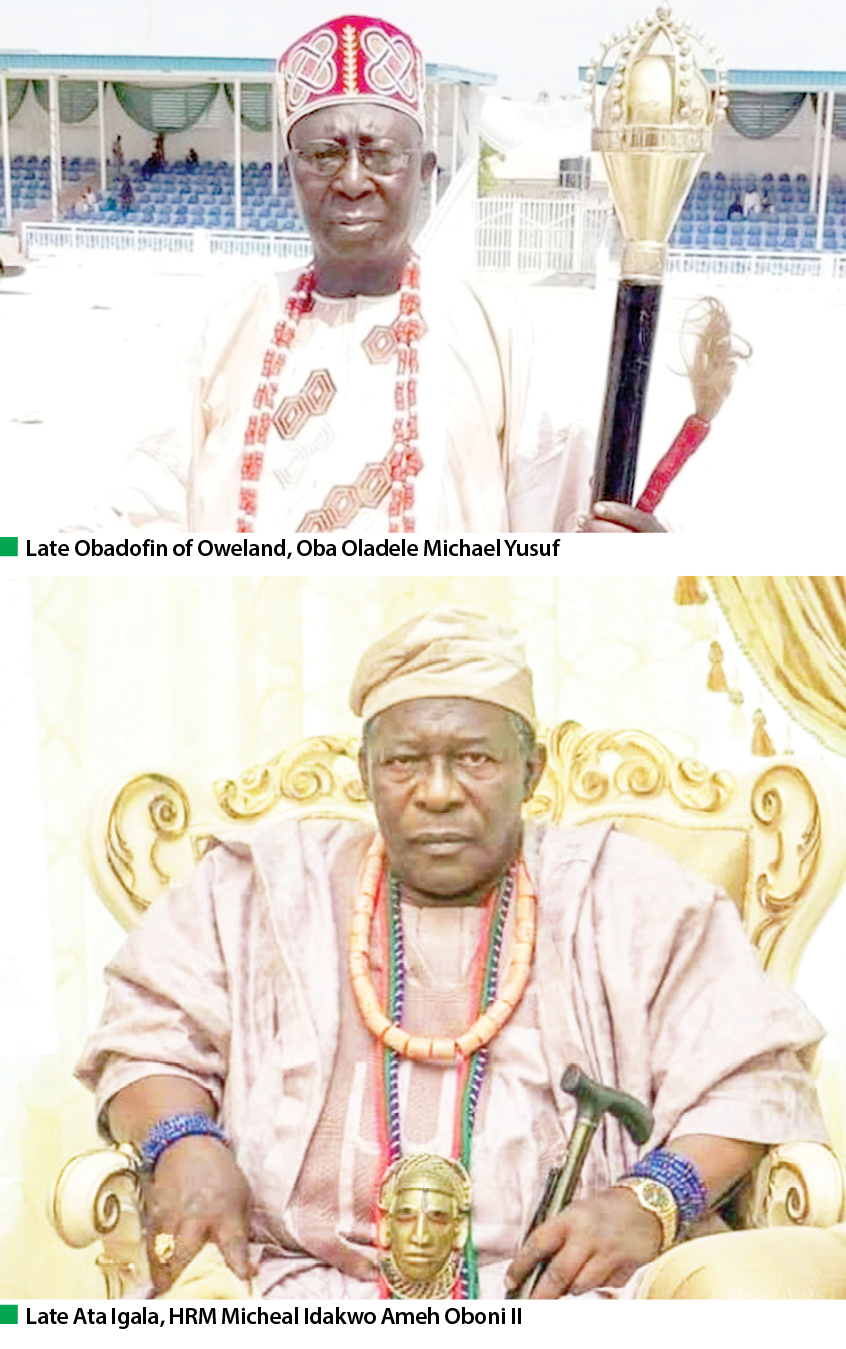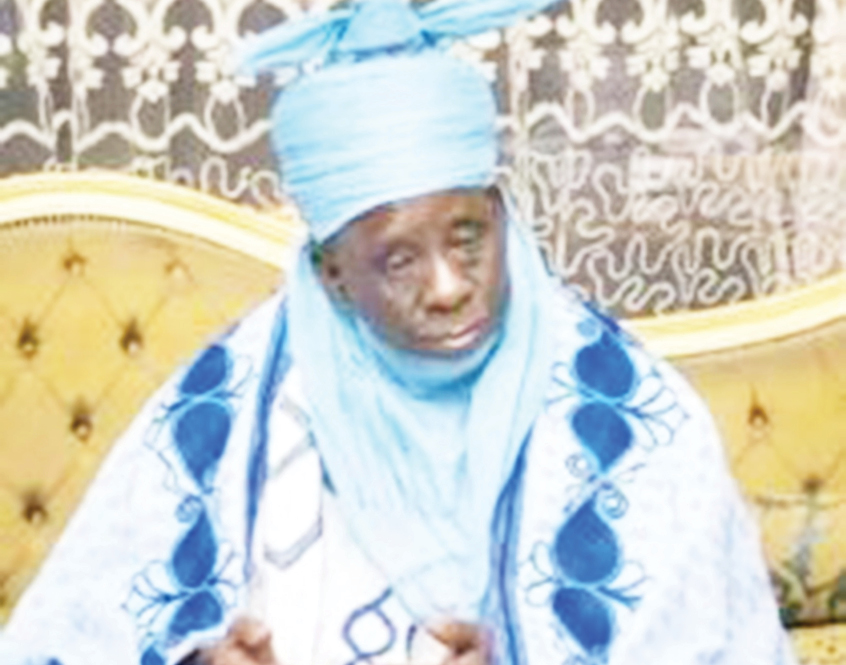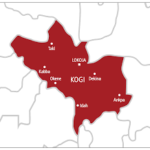Kogi State is gifted with highly respected traditional rulers in the country, with rich cultures and tradition.
The traditional rulers of Igala, Ebira and Okun ethnic nationalities are held in the high esteem because of their deep custom as exemplified in the performance of rites and ceremonies.
However, as closely knitted as these nationalities are, burial rites of their monarchs differ.
Kogi State had a cause to commit three of its high flying traditional rulers to mother earth between 2020 and 2023 – Ata Igala, Micheal Idakwo Ameh Oboni 11; Maigari of Lokoja, Alhaji (Dr) Muhammad Kabir Maikarfi III; and lately, Oba Oladele Michael Yusuf, the Obadofin of Oweland in Kabba-Bunu Local Government Area.
Sudan evacuation: Yet another Nigerian affair
President Buhari: Why FHIS Act is a desirable parting gift
It was noted that the grade of a deceased monarch in any of these tribes determines the kind of burial rites to be performed by subjects in their communities.
Chief priests of various communities are always on ground to do the needful once any of the monarchs transit to the ancestral world.
Except those with the title of emir, burial rites of a typical African traditional ruler are done in the closet with dispatch before their demise is made known to the members of the public.
In some traditions, a typical traditional ruler takes days and even months before the announcement of their demise to members of the public.
The announcement of their transition is always influenced with a lot of rituals or rites till his successor emerges.
In fact, in some traditions in Kogi, monarchs never die, they only embark on long hunting expeditions (transited to the ancestral world) to come back to continue his reign .
In August 27, 2020, it was said that the then Ata Igala went into a “long hunting expedition with his ancestors. And according to tradition, the people of Igala observed a series of rites/rituals until the monarch returned from his hunting expedition (when a new Ata emerged).
To the people of Igala nation, the burial rites of Ata starts the day he transited or “embarks on long hunting expedition.”
Comrade Goodman Akwu, who was brought up in the palace of Ata Igala at Idah; hence understands Igala tradition, said the burial rites of an Ata was not for public consumption.
He said the tradition of the people holds that an Ata is a deity that cannot die.
He said that while the Ata is away on such hunting expedition, the spiritual head of the kingdom called Atebo (chief priest), takes charge of the spiritual affairs of the palace and performs a series of rites and rituals as required by the tradition of the ancestral stool until the monarch returns.
Comrade Akwu added that as the chief priest holds sway spiritually, coordinating other priests to fill the vacuum, Ata’s mother, whom is called Ogwu-Onuede, is expected to cohabit with her husband, called Onu Ubiogbo to give birth to the king at a place called Ofukolo.
“After the birth of a new Ata, a beaded chief priest called Ogbe Ata will do the bathing and dressing of “the new baby” in conjunction with another beaded priest called “Ora Ata” before handing over to a chief in the land, called “Etemahi”, the head of Igalamela kingmakers who will take over proceedings from the Ere Ane deity at Opata in Idah metropolis,” Akwu explained.
According to the tradition, at this stage of the rites, the newborn baby (Ata) is known as “Ayidoko Anya” with a salutation of “To-odo.”
Thereafter, another chief priest of the kingdom called Aganapoje, referred to as “the elder brother of Ata,” would lead people to the Ere Ane deity at Opata in Idah, including 9 masquerades, to welcome the arrival of Ata from his long hunting expedition.
“At this stage, the priest, Aganapoje, purifies the ‘newborn baby’ with ancestral power by fixing the beads on his hands to instantly transform him to Ata with salutation of ‘Agaba-idu.’
“From Ere Ane deity at Opata, Idah, the Ata will be escorted to the palace by all the chiefs in the kingdom, relatives and the people of the land and 9 masquerades through Ayija in Idah to the palace,” he said.
Subsequently, a new Atah is qualified to be coroneted with fanfare.
However, our correspondent gathered that religion has taken the centre stage of burial rites of some monarchs in the state.
Corroborating Comrade Akwu’s submissions, Prince Dayo Ogubiyi from a royal house in the Yoruba-speaking Okun land, said that depending on the affected community, the demise of a beaded chief takes time before it is announced.
“Certain burial rites are done by an ordained chief priest of the stool according to the tradition and custom of the community before such death of a beaded chief is announced.
“No tradition permits the corpse of a beaded king to be kept in the mortuary. If such traditional ruler is connected with any other power, the custodians of such power will also perform their rituals or rites behind the scene before his final interment. What is done or how it is done is only known to the chief priest of the stool. It is a guarded secret,” Ogubiyi said.
However, it was noted that recently, traditional burial rites of some beaded chiefs of the land are being influenced by the tenets of other religions.
Recently, Oba Oladele Michael Yusuf, the Obadofin of Owe land, who died in the hands of his abductors penultimate Thursday, was reported to have been buried according to the tradition of the stool he occupied. But his subjects reportedly organised a thanksgiving service as part of his burial rites on April 28, 2023 at St Andrews Cathedral Church, Kabba.
The president-general of the Kabba Development Union (KDU), Emmanuel Ajibero, an engineer, disclosed that the funeral programme would commence on April 27 with a night of tribute at the monarch’s palace in Agomo Quarters, Kabba metropolis.
He added that the Kogi State chapter of the Gospel Musicians Association of Nigeria (GOMAN) would be on stage to perform.
The transited monarch was said to be the treasurer of the Cathedral Church in his community for many years before he ascended the throne in 2013.
With church connection, his burial rites were extended to the tenets of Christian religion to fulfill all righteousness.
Daily Trust on Sunday reports that when one of Nigeria’s foremost traditional rulers, Maigari of Lokoja, Alhaji (Dr) Muhammad Kabir Maikarfi lll died on September 28, 2022, he was accorded pure Islamic burial rites.
The 80-year-old Maigari, who ascended the throne in 1992, was interred in 2022 beside the grave of his great grandfather shortly after Islamic prayers were observed for him.
According to Uthman Ahmed, a palace attendant, the burial rites of the late Magairi of Lokoja ended after the 3, 8 and 40 days of prayers by Islamic scholars within and outside the state.
“An Islamic scholar, Alhaji Khalifa AbduKadiri Zaria from Zaria in Kaduna State led prayers for the late traditional ruler. It attracted important dignities from far and near,” he said.
The secretary of the Lokoja Local Government Traditional Council, Muhammed Nalado Usman, announced the demise of the traditional ruler on Wednesday and he was buried on Thursday.

 Join Daily Trust WhatsApp Community For Quick Access To News and Happenings Around You.
Join Daily Trust WhatsApp Community For Quick Access To News and Happenings Around You.


